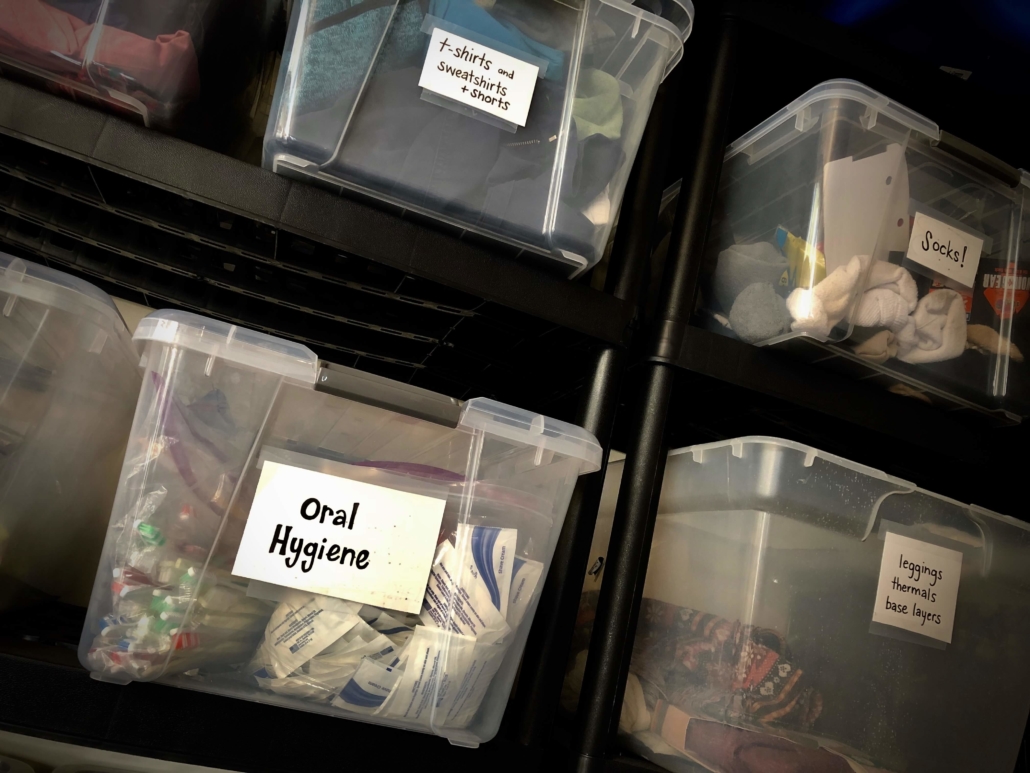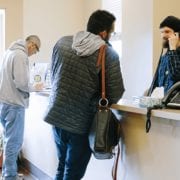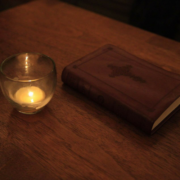Socks in Abundance: Scarcity as a Barrier to Justice
BY SHEA KELLY-BUCKLEY | August 7, 2019
Recently, the street outreach program I served with through Jesuit Volunteer Corps (JVC) Northwest received a generous donation of nearly 300 pairs of socks. The boxes had a large presence, stacked one on top of the other in the corner of our office. My colleagues and I offered socks to anyone we encountered that day without hesitation. It was an experience of true abundance.
As I accompanied folks experiencing homelessness this year, so much of my learning was been geared towards answering these questions: How might I show up to service every day feeling as if I have a limitless supply of socks—even when I may not? How can I constantly return to a place of abundance, even in the midst of what feels like scarcity?

[Image: Lum3n.com via Pexels]
In grappling with these questions, I found some footing in the Jesuit idea of living as “men and women for others,” and engaging in a “radical giving of oneself to others.” It seems to me that both are facets of Ignatian spirituality that are firmly rooted in a sense of abundance. They are lovely and straightforward in their sentiment, yet difficult and complex to put into practice. As part of a street outreach team, maintaining a stance of enough time, enough food, enough sleeping and camping gear, enough socks, and enough staff is demanding work—especially in environments where scarcity is as real as it is perceived and in spaces that are particularly trauma-heavy. In this kind of work, things often begin to feel more dire than they are at face value. Scarcity creeps in and clouded the way I related to those around me and to my work. Surely it was impossible to engage in an authentic, radical giving of myself to others if there was a perception of scarcity, of not-enoughness.
I am learning that the truth is something like this: when we are in relationship with folks who have experienced trauma and oppression, or when we experience this ourselves, we may operate from a sense of scarcity that is simultaneously very real and also not real at all.
Sometimes, we perceive that we don’t have enough of anything—time, money, resources, support, housing supply—because that is the case. Truly there is not enough. End of story. In my daily service, this kind of scarcity showed up in a handful of ways: the nearly two month lag time for folks who are looking to establish care with a mental or behavioral health provider who takes their insurance, our constant shortage of camping backpacks, a lack of local affordable housing units. Scarcity of resources is reflected in the immense efforts organizations devote to comply with funding sources that are vital to keeping the doors open and in the high rate of staff turnover familiar to many organizations that serve folks during their roughest times. Scarcity is very real when there truly aren’t enough beds for the folks who need them each night.

Other times, though, we perceive that we don’t have enough when the enough-ness is all around us. This kind of scarcity is more constructed than it is manifest, and it shows up in various other ways in my service with folks experiencing homelessness: too-rigid screening criteria for programs and services, adding barriers for folks seeking a roof over their heads, punitive responses from employers and coworkers, or our hesitation to give out supplies when we do have them, simply because we know they won’t last forever. It shows up when we don’t pause while filling out intake paperwork to acknowledge the trauma a young person has just disclosed because we want to get it done and move on to the next form. It’s an increased initial deposit for folks attempting to rent an apartment without a solid rental history, and honestly, it’s the resistance I notice in myself towards giving of my own energy when serving folks I find particularly challenging. If we as individuals, along with the organizations to which we belong, felt a sense of abundance that informed the work we do in our communities, how might our choices differ?
Of course, a belief in a fundamental abundance is a radical one—especially in an environment where scarcity is as real as it is constructed. Believing in abundance pushes against the dominant logic of capitalism, of materialism, of an increasingly image-driven culture where lives are lived on large, public stages. Leaning into the enough-ness is a radical act. Perhaps it is an act of faith.
The vital balance in all of this lies in walking the tightrope between real and imagined scarcity. Acknowledging real scarcity requires change in the ways we structure, fund, and support programs and services that accompany folks through the hard stuff. Even more fundamentally, it requires that we are active in changing and re-creating the structures and systems that cause folks to experience the hard stuff in the first place. At the same time, acknowledging that some of our scarcity is constructed means that as folks who accompany, we have to work on our posture and be increasingly more mindful of the ways that our perception of scarcity informs the way we are in relationship to those we serve.
The irony is this: I cannot engage in the radical giving of myself to others when I am alone or when I do not have enough. I also cannot engage in the radical giving of myself to others when I perceive that I am alone or feel that I do not have enough. If I radically give of myself when I’m embedded in a community, an organization, or a nation that operates from a fundamental assumption of scarcity, then my efforts will likely leave me depleted, disheartened, and grasping at straws for other ways to fill me up. I will fall again and again into scarcity. Leaning into abundance then is both an act of faith and a call to action. I can learn to trust in a fundamental abundance at the same time that I work to create conditions that promote material, pragmatic abundance—through things like advocacy, political participation, meaningful relationships, and equitable choices. Doing both at once may move me further and further from the scarcity that threatens to cloud my view and infiltrate my relationships.
“In Irish, when you talk about trust, there’s a beautiful phrase from West Kerry where you say, ‘mo sheasamh ort lá na choise tinne’ — ‘You are the place where I stand on the day when my feet are sore.’”
– Pádraig Ó Tuama, a poet, theologian, and the community leader of Corrymeela, Northern Ireland’s oldest peace and reconciliation organization (taken from onbeing.org)
Abundance is the impetus for becoming that place of refuge—for ourselves, our clients, and our communities. Being the place where others might stand on the days when their feet are sore, as best and as often as we can, requires that we refuse to allow scarcity to be a barrier to justice, and instead choose abundance by trusting in and fighting for the enough-ness that is all around us. It is that work which moves me closer and closer to an authentic and radical giving of myself to others. It is the work of choosing, experiencing, and creating abundance that leads me back to a sense of limitless socks.
Shea Kelly-Buckley is a 2018-2019 member of Jesuit Volunteer Corps Northwest. She serves as the community health street outreach coordinator at Cascade Youth & Family Center / J Bar J Youth Services in Bend, Oregon. She graduated from the University of Notre Dame and is from Reading, Pennsylvania.









Living as men and women for others – adds life to our lifespan.